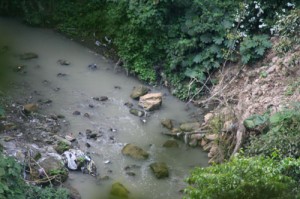 More than 20 percent of Latin Americans and Caribbeans have no basic sanitation and 15 percent of them directly without access to clean water, a resource victim of poor management, say experts meeting in Brazil.
More than 20 percent of Latin Americans and Caribbeans have no basic sanitation and 15 percent of them directly without access to clean water, a resource victim of poor management, say experts meeting in Brazil.
“We must recognize that water quality is a serious problem with serious pollution situation due to mishandling and disabilities in management, and aquifers deplete its reserves at a rapid pace”, as stated by Walter Ubal, International Research Center Development, Government of Canada (IDRC ).
The super concentrates urban grow the demand for the resource and, consequently, the cost of search and purify is “high,” said the specialist in management of natural and environmental resources present at the XIV World Water Congress, held in Porto de Galinhas in northern Brazil.
The meeting was organized by the Pernambuco state government and the International Water Resources Association (IWRA ), an international NGO.
“The worst thing is that we are dealing with treatment options that may be more expensive and generate greater environmental impacts,” warned Ubal, who acknowledges that there is no way to purify water that is 100 percent sustainable.
He explained that “it is necessary to find ways not as bad , in turn, can be incorporated social elements.”
“All this is a very big effort, because a large water treatment plant residual may be generated odors and changes the value of homes, leading to face a complexity beyond the technical, which is the social”, analyzed.
In order to understand the status of the plant wastewater treatment in the region, the director of the
Institute of Engineering of the National University Autonomous of Mexico (UNAM), Adalberto Noyola, coordinates a team of specialists who seek to adapt processes and technologies that are more sustainable to improve the situation in Latin America.
The goal of the research, which includes Mexico, Dominican Republic, Guatemala, Colombia, Chile and
Brazil, to assess the environmental impacts of the technologies applied in the field in the region and identify strategies to mitigate greenhouse gases, Noyola said.
“We treat the water to avoid contaminating the river, sea or land and as society progresses and more demand for water in many areas for resource reuse in irrigation for agriculture and industry, although not for home use, “he said.
Brazil and Mexico, whose combined population equal to half that of Latin America and the Caribbean, have a percentage of its sewage treatment ranging from 30 to 40 percent.
Chile, meanwhile, was included in the study because it has characteristics of water and sanitation services similar to those “in the industrialized world for its long-term continuous policy of privatization,” said Noyola, who said that in 2012 the country will reach the index 100 percent of its water treatment used.
Dominican Republic and Colombia, however, perform purification treatment only 25 percent of water used, while Guatemala just do it with 10 or 15 percent.
Noyola explained that in the region are used basically three types of technologies to treat wastewater, which are the stabilization ponds, activated sludge and anaerobic reactors.
Stabilization ponds, which are large tanks coated with cement, compacted clay or plastic sheets to prevent infiltration, “have the advantage that their cost of operation is very low, although its size can only be installed on land planes, “he noted.
The activated sludge is more compact, but requires equipment, engines and technology, and operating costs for electric power is greater. “You can have a constant water quality” with this method, he said.
As anaerobic reactors, compact airless count “with the advantage that their cost of operation is very low.”
However, it produces methane instead of generating organic matter. “The disadvantage is that water quality is less than the system’s assets and must be supplemented with a post treatment,” he said. Noyola Ubal agrees that there is a technology for treating wastewater that is entirely sustainable and environmentally sound in its entirety.
“There are greener than others. The whole process involving energy will bring a result, however small. The challenge is to reduce the impacts,” he said.
To Noyola, there is no single technology for use in water treatment in Latin America, since “there are many scenarios of treatment plant sizes and even different geographical areas.”
When treating water consumes energy, which generates a load of greenhouse gas emissions, he argued.
“Methane gas is dangerous, with a big impact on climate change.
If you delete and do not get it can be contributing negatively. You’re moving water pollution to the atmosphere, or a problem is changed to move to another, “said Loyola.
This expert is coordinating a pioneering study that aims to develop a representative of the current diagnosis and treatment of wastewater in the cities of Latin America, and gather information in a guide that is available to municipal governments.
“We will make recommendations to guide the decision maker select the best technology that best suits your needs. Some countries have made progress on recommendations, but more of a technical and economic.
We also bring the environmental study, “he said. According to engineer Noyola, the water treatment plants also have negative impacts and we need to minimize them and make a more sustainable choice of technology.
FROM | ipsnoticias.net
Source: http://www.bluechannel24.com
Dear User/Visitor! Please, answer on our questions: tick off one of the positions – your answer will make us able to improve our site and make it more interesting and useful!

